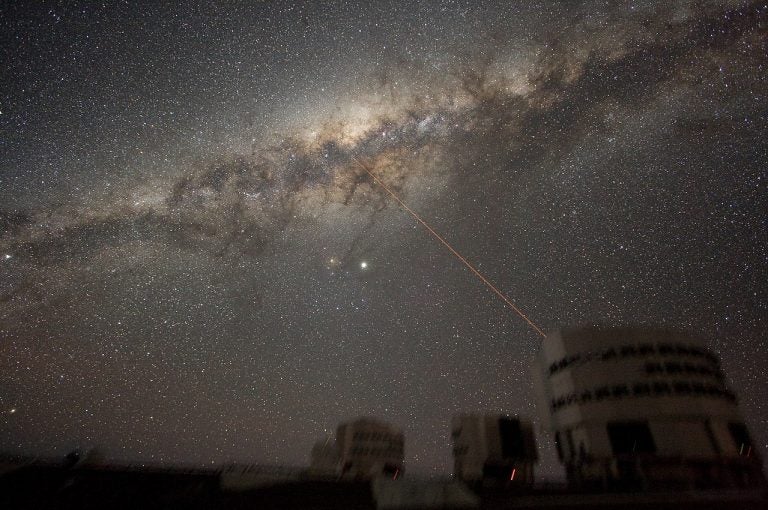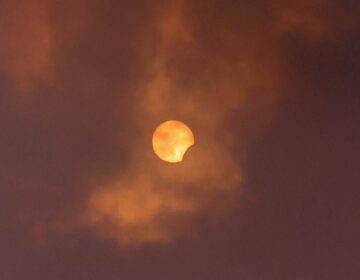Galactic Two-Step
Listen 05:13
The Milky Way's Galactic Center in the night sky above the Paranal Observatory (the laser creates a guide-star for the telescope). ESO/Y. Beletsky
Our Milky Way is thought to have originally formed shortly after the birth of the universe, 13.5 billion years ago. Built from the first stars and star clusters, gas from the galactic halo also contributed to the formation of the galaxy. Multiple galactic mergers helped trigger new star formation over and over again.
But a new study of the Milky Way’s composition led by astronomers from the Astronomical Institute at Tohoku University in Tokyo suggests that our galaxy stopped producing stars and went dormant for 2 billion years about 7 billion years ago. The galaxy was essentially dead. Two-stage galaxy formation is not a new idea, but the new study might suggest that the two-stage process, where star formation takes a billion-year hiatus, is not uncommon in Milky Way-sized galaxies but far less likely in smaller galaxies.
Turning to dark sky highlights, Mercury is visible low in the east at 5:45am; four planets in the evening sky for just another two week. Turning to constellations of note; Big Dipper in the North-West, Pegasus in the east, Hercules and the summer triangle right overhead; Libra(Jupiter), Scorpius, and Sagittarius(Saturn and Mars) hold the planets together.
WHYY is your source for fact-based, in-depth journalism and information. As a nonprofit organization, we rely on financial support from readers like you. Please give today.




